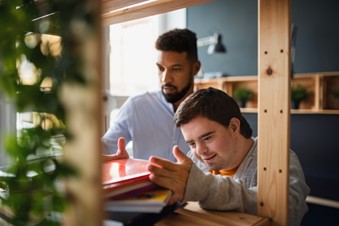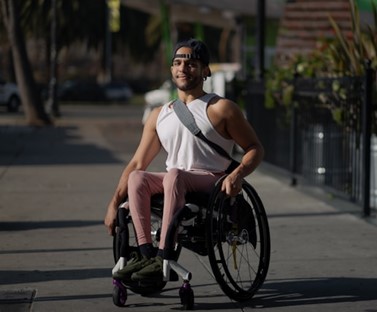In the realm of higher education, access to quality education is not just a privilege—it’s a fundamental right. However, for students with disabilities, accessing higher education can often be met with unique challenges. From navigating physical barriers to addressing discriminatory attitudes, these individuals often face obstacles that can hinder their academic success. In the following article, Jennifer Yruegas discusses the importance of supporting students with impairments in accessing higher education and strategies for creating inclusive college environments.
Understanding Disability in the College Context
Before delving into the challenges encountered by students with disabilities in higher education, it’s crucial to recognize the broad spectrum of disabilities and their individual impacts on learning and participation in college activities. Disabilities are not monolithic; rather, they encompass a wide range of physical, cognitive, sensory, and developmental impairments, each presenting unique challenges and strengths for the individuals affected.
Physical disabilities may include mobility limitations, such as difficulty walking or using stairs, which can pose challenges in navigating campus buildings and facilities. Learning disabilities, on the other hand, affect cognitive processes related to reading, writing, or mathematical reasoning, impacting a student’s ability to absorb and process academic information effectively. Sensory impairments, such as visual or hearing impairments, can affect how students perceive and interact with their environment, requiring accommodations such as Braille materials or sign language interpreters. Additionally, mental health conditions such as anxiety, depression, or ADHD can impact students’ emotional well-being and academic performance, necessitating support services and accommodations in order to address their unique needs.
These disabilities are not mutually exclusive, and some students may experience overlapping challenges related to multiple impairments. For example, a student with a physical disability may also have a learning impairment, necessitating accommodations to address both mobility limitations and academic difficulties. Understanding the diverse nature of a person’s disability is essential for colleges and universities to effectively support students and create inclusive environments that accommodate their individual needs. By recognizing the unique challenges faced by these students and providing appropriate accommodations and support services, higher education institutions can ensure that all students have equal access to learning opportunities and can thrive academically and personally during their college journey.

Challenges Faced by Students with Disabilities in College
Students with disabilities encounter a myriad of obstacles when pursuing higher education. Physical barriers, such as inaccessible buildings and classrooms, can limit their mobility and access to campus resources. Additionally, negative attitudes and misconceptions about their impairments may lead to discrimination and exclusion from academic and social opportunities. Moreover, students with disabilities may require accommodations and support services to fully participate in classroom instruction, exams, and campus activities.
Creating Inclusive College Environments
Inclusive higher education environments are essential for ensuring that all students, including those with disabilities, have equal access to learning opportunities. Inclusive colleges prioritize diversity, equity, and accessibility, fostering a supportive atmosphere where every student can thrive. Here are some strategies for creating inclusive college environments:
- Accessibility Measures: Colleges should implement accessibility measures to remove physical and digital barriers on campus. This includes providing ramps, elevators, accessible restrooms, and ensuring that online materials are compatible with assistive technologies.
- Disability Services and Accommodations: Colleges should offer disability services offices to provide support and accommodations for students with disabilities. These accommodations may include extended test time, note-taking assistance, sign language interpreters, and accessible course materials.
- Inclusive Teaching Practices: Educators should adopt inclusive teaching practices that accommodate diverse learning styles and abilities. This may involve using universal design for learning (UDL) principles, providing alternative formats for course materials, and offering flexibility for assignments and assessments.
- Campus Support Networks: Establishing campus support networks, such as disability student organizations and peer mentorship programs, can provide a sense of community and support for students with disabilities. These networks offer opportunities for socialization, advocacy, and shared experiences.
- Faculty and Staff Training: Colleges should provide training and professional development opportunities for faculty and staff to enhance their understanding of disability issues and inclusive teaching practices. This may include workshops on disability awareness, accessibility guidelines, and strategies for supporting students with disabilities.
Conclusion
In conclusion, supporting students with disabilities in accessing higher education is essential for promoting equity, diversity, and inclusion on college campuses. By creating inclusive environments, offering accommodations and support services, and fostering positive relationships between students, faculty, and staff, colleges can ensure that all learners have the opportunity to succeed. Together, let’s work towards building a more inclusive higher education system where every student, regardless of ability, can achieve their academic and personal goals.
